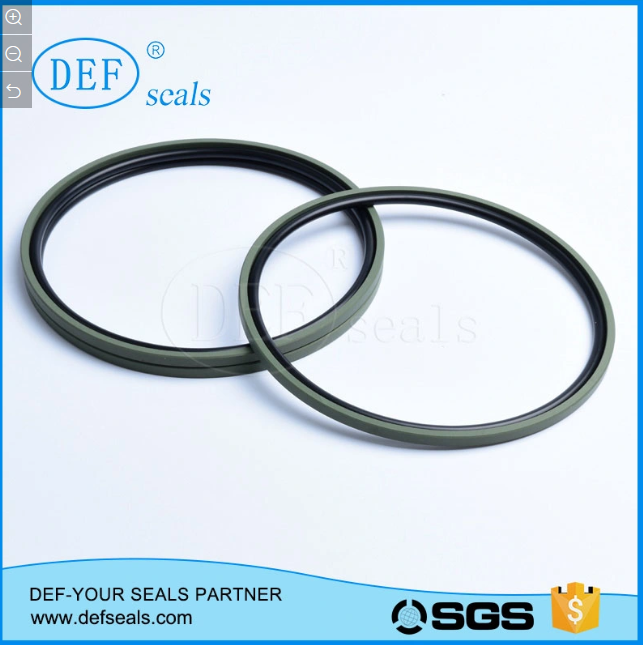Problems in Rubber Processing
2023-04-18
1. Overview
The main raw materials of rubber products are raw rubber, various compounding agents, and fiber and metal materials as skeleton materials. The basic production process of rubber products includes six basic processes: molding, mixing, rolling, extrusion, forming, and vulcanization.
The processing process of rubber is mainly to solve the contradiction between plasticity and elasticity. Through various processing methods, elastic rubber is transformed into plastic compound rubber, which is made into semi-finished products by adding various additives. Then, through vulcanization, the plastic semi-finished products are transformed into rubber products with high elasticity and good physical and mechanical properties.
2. Rubber processing technology
2.1 Plastic Refining Process
Raw rubber molding is the process of transforming raw rubber from a strong elastic state to a soft and easy to process plastic state through methods such as mechanical stress, heat, oxygen, or the addition of certain chemical reagents.
The purpose of raw rubber molding is to reduce its elasticity, increase its plasticity, and obtain appropriate fluidity to meet the requirements of various processing processes such as mixing, sub derivatization, extrusion, molding, vulcanization, and rubber slurry manufacturing, sponge rubber manufacturing, etc.
Mastering the appropriate plasticity is crucial for the processing and quality of rubber products. On the premise of meeting the processing requirements, the plasticity should be minimized as much as possible. With the emergence of constant viscosity rubber and low viscosity rubber, some rubbers no longer need to be molded and are directly mixed.
In the rubber industry, the commonly used molding methods include mechanical molding and chemical molding. The main equipment used in the mechanical mixing method is an open type rubber mixer, a closed type rubber mixer, and a screw plastic mixer. The chemical molding method is a method of adding chemicals to improve the molding effect during the mechanical molding process.
The temperature during the opening of the mixer is generally below 80 ℃, which belongs to the low-temperature mechanical mixing method. The discharge temperature of internal mixer and screw mixer is above 120 ℃, even up to 160-180 ℃, belonging to high-temperature mechanical mixing.
Before mixing, raw rubber needs to undergo pre processing such as baking, cutting, selecting, and breaking before it can be molded.
The plastic properties of several adhesives:
When natural rubber is molded using an open mill, the roller temperature is 30-40 ℃ and the time is about 15-20 minutes; When the temperature reaches 120 ℃ or above, the mixing time is about 3-5 minutes using an internal mixer.
The Mooney viscosity of styrene-butadiene rubber is mostly between 35 and 60, therefore, styrene-butadiene rubber may not need to be plasticized, but after plasticization, the dispersibility of the blending machine can be improved.
Polybutadiene rubber has cold fluidity and lacks plasticizing effect. The Mooney viscosity of cis-1,4-polybutadiene rubber is low, so it does not need to be molded.
Neoprene rubber has high plasticity and can be thinned 3-5 times before molding, with a temperature of 30-40 ℃.
The molecular main chain of ethylene propylene rubber is a saturated structure, and it is difficult to cause molecular cracking during molding. Therefore, it is necessary to choose a variety with low Mooney viscosity instead of molding.
Nitrile rubber has low plasticity, high toughness, and high heat generation during molding. When starting the smelting process, it is necessary to use low temperature below 40 ℃, small roller pitch, low capacity, and segmented molding to achieve good results.
2.2 Mixing process
Mixing refers to the process of evenly mixing various ingredients into raw rubber seeds on a rubber mixer. The quality of mixing has a decisive impact on the further processing of the rubber material and the quality of the finished product. Even if the formula of the rubber material is good, if the mixing is not good, it will lead to uneven dispersion of the mixing agent, high or low plasticity of the rubber material, easy scorching, frost spraying, etc., which will prevent the normal operation of rolling, extrusion, coating, and vulcanization processes, and also lead to a decrease in product performance.
The mixing method is usually divided into two types: open mixer mixing and internal mixer mixing. Both of these methods are intermittent mixing, which is currently a widely used method.
The mixing process of the opening mill is divided into three stages, namely the roll wrapping (softening stage with the addition of raw rubber), the powder feeding (mixing stage with the addition of powder), and the turning (stage where the raw rubber and the compounding agent are evenly dispersed after the powder feeding).
The mixing process of the opening mixer varies depending on the type, purpose, and performance requirements of the rubber material. During mixing, attention should be paid to various factors such as the amount of glue added, the order of feeding, roll spacing, roll temperature, mixing time, roller speed and speed ratio. Neither insufficient mixing nor excessive refining is allowed.
The mixing process in the internal mixer is divided into three stages, namely wetting, dispersing, and refining, and the mixing of stones in the internal mixer is carried out under high temperature and pressure. The operating methods are generally divided into one stage mixing method and two stage mixing method.
One stage mixing method refers to the method of completing mixing through an internal mixer in one go and then pressing to obtain mixed rubber. It is suitable for all natural rubber or rubber materials mixed with synthetic rubber not exceeding 50%. In a single mixing operation, the step-by-step feeding method is often used in batches. In order to prevent the rubber material from increasing sharply, a slow speed mixer or a dual speed mixer can be used, and the temperature when adding sulfur must be below 100 ℃. The feeding sequence is raw rubber - small material - reinforcing agent - filler - oil softener - discharge - cooling - adding sulfur and super accelerator.
The two-stage mixing method refers to the method of mixing and pressing pieces twice through an internal mixer to produce mixed rubber. This method is suitable for rubber materials with a synthetic rubber content exceeding 50%, which can avoid the disadvantages of long mixing time and high rubber temperature during a single mixing process. The first stage mixing method is the same as the first stage mixing method, except that it does not add vulcanization and high activity promoters. After the first stage mixing is completed, the lower plate is cooled, parked for a certain period of time, and then the second stage mixing is carried out. Mix evenly and transfer the material to the tablet press before adding vulcanizing agent. After mixing, lower the tablet. The segmented mixing method has a shorter mixing time, lower mixing temperature, more uniform dispersion of the compounding agent, and higher quality of the rubber material.
2.3 Rolling process
Calendering is the process of making mixed rubber into film or semi-finished rubber fabric with skeleton materials on a calender. It includes operations such as lamination, lamination, molding, and fabric gluing.
The main equipment of the rolling process is the rolling machine, which generally consists of a working roller, a frame, a base, a transmission device, a speed control and distance adjustment device, a roller heating and cooling device, a lubrication system, and an emergency stop device. There are many types of rolling machines, with two, three, or four different working rollers arranged in vertical and horizontal forms; The three rollers have a vertical type Γ Type and triangle; Four rollers with Γ There are various types, including L-type, Z-type, and S-type. According to the purpose of the process, there are mainly laminating and calendering machines (used for calendering film or textile adhesive pasting, most of which have three or four rollers with different plasticity), erasing and calendering machines (used for textile adhesive pasting, with three rollers, each roller has a certain speed ratio, and the middle roller speed is large. The speed ratio is used to rub into the textile fabric), universal calendering machines (also known as universal calendering machines, which have both laminating and erasing functions, three or four rollers, and can adjust the speed ratio), pressure forming and calendering machines Bonding and wire rolling machines.
The rolling process generally includes the following processes: preheating and feeding of mixed rubber; Guide and drying of textile fabrics (sometimes with glue immersion)
The cooling, coiling, cutting, and placement of semi-finished products by pressing the rubber material on a four or three roll rolling machine or hanging the rubber on textile fabrics.
Before rolling, it is necessary to preprocess the rubber material and textile fabric. Before the rubber material enters the rolling machine, it needs to be turned over and melted on the hot mixer. This process is called hot mixing or preheating, and its purpose is to improve the mixing uniformity of the rubber material, further increase plasticity, increase temperature, and increase plasticity. In order to improve the adhesion performance of adhesive and textile fabrics and ensure the quality of rolling, it is necessary to dry the fabric with a moisture content controlled at 1-2%, low moisture content, hardening of the fabric, easy damage during rolling, high moisture content, and poor adhesion.
The rolling performance of several common rubbers: natural rubber has a large thermal deformation, low shrinkage rate, easy rolling, and easy adhesion to hot rollers. The temperature difference between each roller should be controlled to facilitate smooth film transfer; Styrene butadiene rubber has low thermoplastic properties and high shrinkage rate, so the rubber used for rolling should be fully molded. Due to the significant thermal sensitivity of styrene butadiene rubber to rolling, the rolling temperature should be lower than that of natural rubber, and the temperature difference between each roller can vary from high to low; Chloroprene rubber is easy to stick to rollers at 75-95 ℃ and is difficult to roll. Low temperature or high temperature methods should be used, and rolling should be quickly cooled. Adding paraffin and stearic acid can reduce the phenomenon of roll sticking; Ethylene propylene rubber has good rolling performance and can be continuously operated over a wide temperature range. When the temperature is too low, the rubber material has a large shrinkage and is prone to producing bubbles; Nitrile rubber has low thermoplastic properties and high shrinkage. Adding fillers or softeners to the rubber material can reduce the shrinkage rate. When the weight of the filler accounts for more than 50% of the weight of the raw rubber, a smooth surface film can be obtained. Nitrile rubber has low viscosity and is prone to sticking to cold rolls.
News







